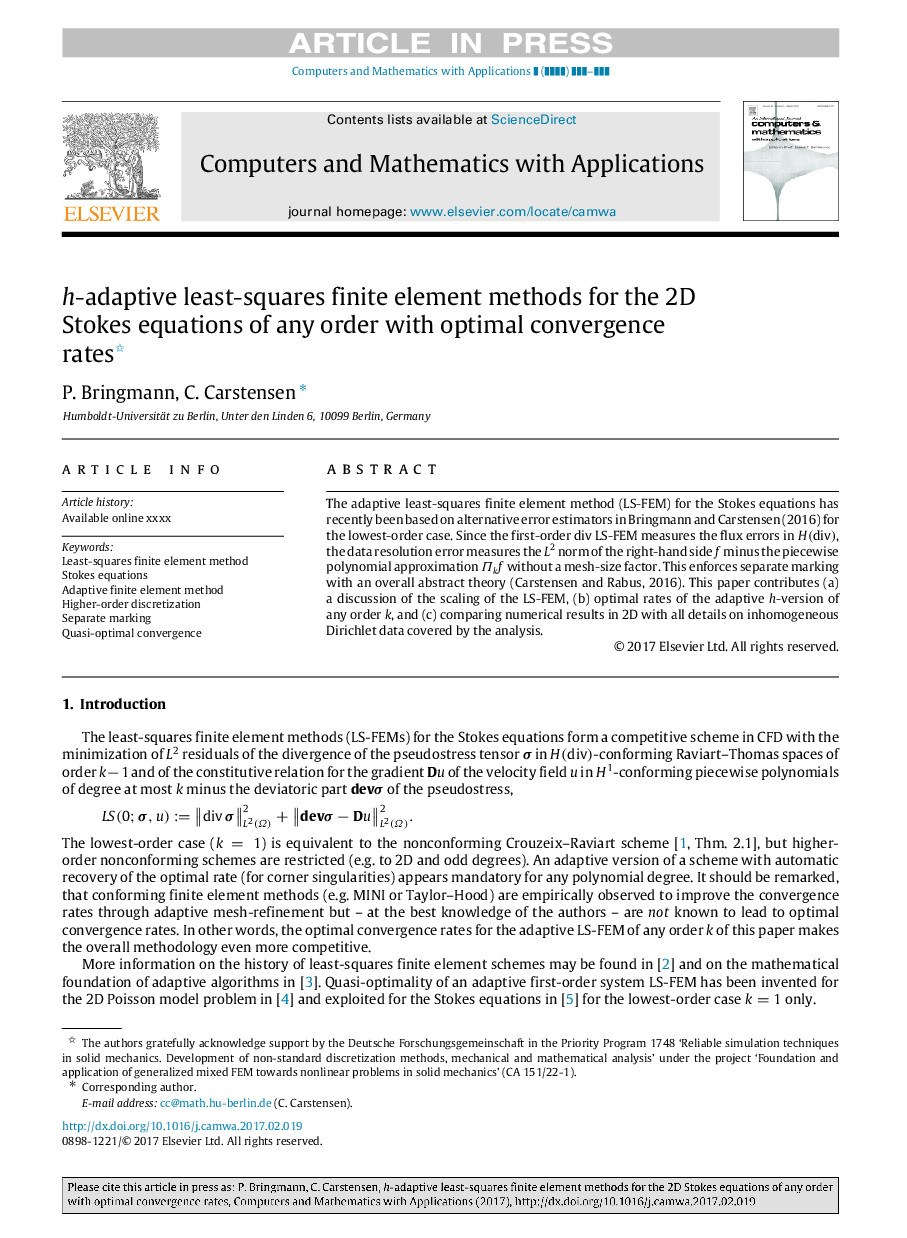| Article ID | Journal | Published Year | Pages | File Type |
|---|---|---|---|---|
| 6892464 | Computers & Mathematics with Applications | 2017 | 17 Pages |
Abstract
The adaptive least-squares finite element method (LS-FEM) for the Stokes equations has recently been based on alternative error estimators in Bringmann and Carstensen (2016) for the lowest-order case. Since the first-order div LS-FEM measures the flux errors in H(div), the data resolution error measures the L2 norm of the right-hand side f minus the piecewise polynomial approximation Î kf without a mesh-size factor. This enforces separate marking with an overall abstract theory (Carstensen and Rabus, 2016). This paper contributes (a) a discussion of the scaling of the LS-FEM, (b) optimal rates of the adaptive h-version of any order k, and (c) comparing numerical results in 2D with all details on inhomogeneous Dirichlet data covered by the analysis.
Related Topics
Physical Sciences and Engineering
Computer Science
Computer Science (General)
Authors
P. Bringmann, C. Carstensen,
